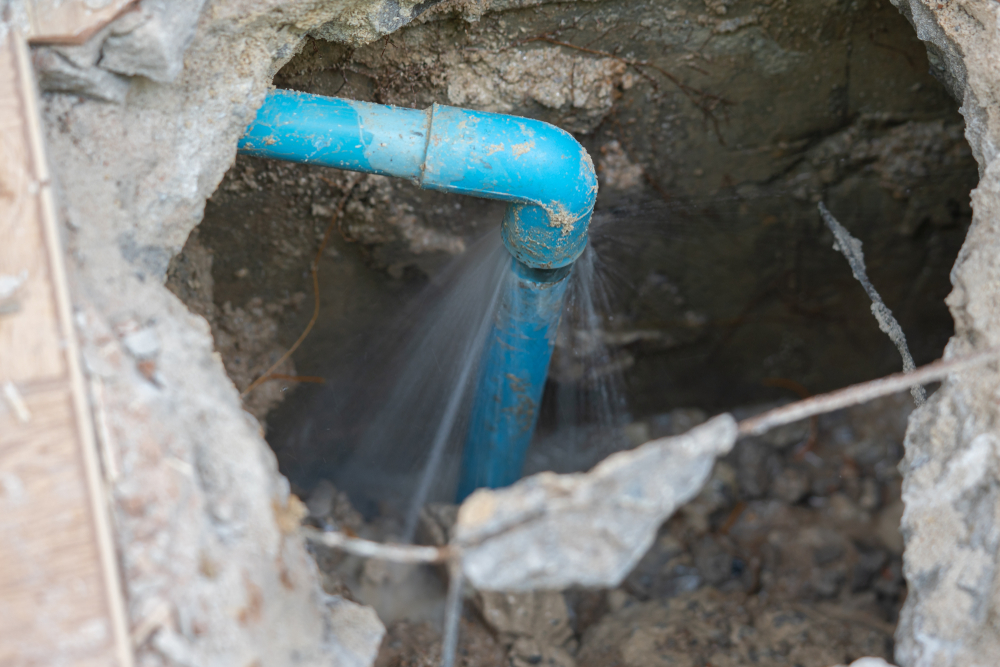Just how to Inspect If Your Home Has a Hidden Leakage
Just how to Inspect If Your Home Has a Hidden Leakage
Blog Article
This article below about Finding hidden leaks is without a doubt insightful. You should see for yourself.

Early discovery of leaking water lines can reduce a possible calamity. Some little water leaks might not be noticeable.
1. Analyze the Water Meter
Every residence has a water meter. Checking it is a surefire manner in which aids you find leakages. For beginners, turn off all the water resources. Make sure nobody will flush, utilize the faucet, shower, run the cleaning maker or dishwashing machine. From there, go to the meter as well as watch if it will certainly transform. Since no one is using it, there ought to be no movements. If it relocates, that suggests a fast-moving leak. Also, if you find no changes, wait an hour or more and check back again. This implies you might have a slow leakage that might also be below ground.
2. Examine Water Usage
If you identify unexpected modifications, regardless of your consumption being the exact same, it implies that you have leakages in your plumbing system. An abrupt spike in your costs indicates a fast-moving leakage.
A steady boost every month, even with the exact same habits, shows you have a slow-moving leak that's also gradually intensifying. Call a plumber to thoroughly inspect your building, specifically if you really feel a warm area on your floor with piping below.
3. Do a Food Coloring Examination
When it comes to water consumption, 30% comes from toilets. Examination to see if they are running properly. Decrease flecks of food shade in the container and wait 10 mins. If the shade in some way infiltrates your bowl throughout that time without flushing, there's a leak between the container as well as bowl.
4. Asses Outside Lines
Do not fail to remember to inspect your exterior water lines too. Should water seep out of the link, you have a loose rubber gasket. One little leak can lose bunches of water and also increase your water bill.
5. Check as well as Assess the Situation
Homeowners need to make it a routine to check under the sink counters and also inside cabinets for any type of bad odor or mold and mildew growth. These two warnings show a leak so prompt interest is required. Doing routine evaluations, even bi-annually, can save you from a significant trouble.
Extra significantly, if you recognize your home is currently old, maintain a watchful eye on your heaters, hoses, pipelines and so on. Look for stainings and deteriorating as the majority of pipelines as well as home appliances have a life expectancy. They will certainly additionally normally degrade due to tear and use. If you presume leaking water lines in your plumbing system, don't wait on it to escalate. Call a professional plumber today so you don't wind up with an awful mess in your home.
Early detection of leaking water lines can mitigate a prospective calamity. Some tiny water leaks might not be visible. Examining it is a guaranteed way that helps you uncover leakages. One small leak can waste lots of water and surge your water expense.
If you suspect dripping water lines in your plumbing system, do not wait for it to escalate.
WARNING SIGNS OF WATER LEAKAGE BEHIND THE WALL
PERSISTENT MUSTY ODORS
As water slowly drips from a leaky pipe inside the wall, flooring and sheetrock stay damp and develop an odor similar to wet cardboard. It generates a musty smell that can help you find hidden leaks.
MOLD IN UNUSUAL AREAS
Mold usually grows in wet areas like kitchens, baths and laundry rooms. If you spot the stuff on walls or baseboards in other rooms of the house, it’s a good indicator of undetected water leaks.
STAINS THAT GROW
When mold thrives around a leaky pipe, it sometimes takes hold on the inside surface of the affected wall. A growing stain on otherwise clean sheetrock is often your sign of a hidden plumbing problem.
PEELING OR BUBBLING WALLPAPER / PAINT
This clue is easy to miss in rooms that don’t get much use. When you see wallpaper separating along seams or paint bubbling or flaking off the wall, blame sheetrock that stays wet because of an undetected leak.
BUCKLED CEILINGS AND STAINED FLOORS
If ceilings or floors in bathrooms, kitchens or laundry areas develop structural problems, don’t rule out constant damp inside the walls. Wet sheetrock can affect adjacent framing, flooring and ceilings.
https://www.servicemasterbyzaba.com/blog/how-to-detect-water-leakage-in-walls/

I have been very interested by Detecting hidden plumbing leaks and I'm hoping you enjoyed the blog posting. Enjoyed reading our review? Please share it. Let someone else check it out. Thanks a lot for your time invested reading it.
Report this page